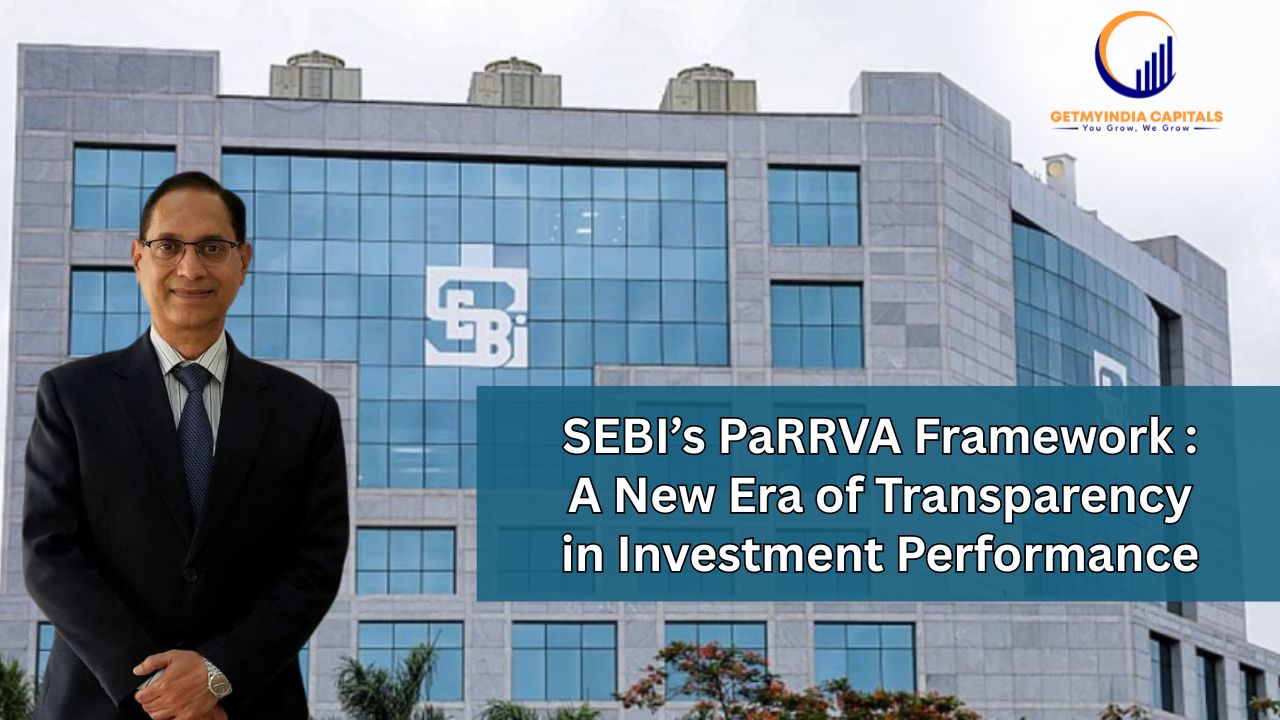Introduction
The Securities and Exchange Board of India (SEBI) issued a framework for operationalising the Past Risk and Return Verification Agency (PaRRVA) to validate the risk-return metrics claims made by financial service providers. SEBI first announced the PaRRVA initiative in December 2024 to verify the performance claims made by investment advisors (IAs), research analysts (RAs), and algo providers.
What changes did SEBI make?
SEBI amended various guidelines to enable algo providers and other regulated entities to avail themselves of PaRRVA services. To explain, SEBI’s guidelines for stock brokers providing algorithmic trading services initially prohibited them from making references to the past or expected future performance/return of the algorithm. However, these restrictions will not apply to references of risk-return claims on algorithmic trading, which have been verified by PaRRVA in a manner stipulated by SEBI.
Further, SEBI amended specific provisions of the Master Circular for IAs and RAs, which barred them from referencing their past performance in their advertisements. Akin to stock brokers, these entities can now make claims referencing their risk-return metrics, provided PaRRVA validates them.
Who can become a PaRRVA?
As per SEBI’s circular, credit rating agencies (CRAs) can register as PaRRVA. For context, such entities assess the ability of issuer companies for timely payment of interest and principal on a debt instrument. For a CRA to function as a PaRRVA, it must have existed for at least 15 years, have a minimum net worth of ₹ 100 crore, and maintain an investor grievance redressal mechanism, such as an online dispute resolution (ODR) system. Entities should also have provided ratings of listed or proposed debt securities to 250 or more issuers.
Further, recognised stock exchanges (SEs) functioning as PaRRVA Data Centres (PDC) should engage with registered CRAs. To be eligible as a PDC, stock exchanges should have existed for a minimum of 15 years, have a net worth of at least ₹ 200 crore, and have nationwide terminals and an investor grievance redressal mechanism as outlined above. PaRRVA acts as the principal, utilizing PDC’s verification services, but it holds full responsibility for the overall process.
CRAs can be recognized as PaRRVA following a two-stage process of receiving an in-principle approval and later the final recognition. SEBI will also conduct a pre-recognition site visit, ensuring that the CRA’s systems comply with the Cybersecurity and Cyber Resilience Framework (CSCRF), and carry out an audit before granting the final recognition. Entities performing as a PaRRVA would function on a two-month pilot period, during which they can undertake fine-tuning of their technological systems.
What functions should PaRRVA-PDC perform?
The market regulator mandates that CRAs interested in being recognised as a PaRRVA should develop a verification system and methodology in correspondence with the recommendations of a technical group and the oversight committee. SEBI constituted this technical group to outline the operational framework for the verification process and it comprises representatives from market infrastructure institutions (MIIs), CRAs, stock brokers, mutual funds, IAs, and RAs.
PaRRVAs should undertake the following responsibilities:
- Define the methodology for computing risk-return metrics.
- Formulate verification and operational workflow comprising data points required from concerned regulated entities.
- Prepare the business requirement document for developing the verification systems and conduct user acceptance testing (UAT).
- Enter into agreements with clients and with a PDC, MIIs, and other agencies providing critical data.
- Connecting with a PDC to receive verified risk-return metrics to be displayed on its website and shared with clients/investors.
- Establish appropriate information security standards to store and manage the metrics.
- Address and resolve grievances and queries by investors, clients, or regulated persons and handle disputes concerning the verification process.
- Display the verification methodology on their website.
- Maintain all records of verified outputs from the PDC and verified risk-return metrics shared with clients for a minimum period of five years.
Further, PDCs shall fulfil the following functions:
- Develop and host the verification system.
- Establish connectivity with MIIs, regulated persons, and other agencies for data sharing.
- Process verification requests based on the PaRRVA-defined methodology.
- Maintain the confidentiality and ownership of data received for the verification process and shared with the PaRRVA. This data should also be stored in compliance with appropriate information security standards.
- Connect with PaRRVA to share the output after the verification process.
- Support the agency in addressing investor queries and grievances.
- Conduct half-yearly internal audits on the information security protocols and share the same with PaRRVA.
- SEBI also outlined that these responsibilities are not exhaustive and are subject to evolution.
How should verified risk-return metrics be presented?
SEBI’s circular also details several guidelines to prevent the misrepresentation of verified risk-return metrics as follows:
- Prohibition of selective display of PaRRVA-verified returns of any product or service.
- Include information about the total number of portfolios/algos verified by PaRRVA during the relevant period while making any claim using risk-return metrics.
- Claims of risk-return metrics concerning investment advice/recommendation should not contain the name of any specific stock/derivative instrument.
- No arbitrary selection of dates or time periods to present favourable outcomes.
- Claims made electronically or physically should comprise a link or QR code detailing an overall summary of the risk-return metrics on the PaRRVA’s website.
Conclusion
The SEBI PaRRVA framework marks a significant step towards enhancing transparency in India’s investment ecosystem. By standardizing reporting, improving data accessibility, and ensuring consistency in performance evaluation, PaRRVA empowers investors with clearer insights. This fosters better decision-making and strengthens trust in the market. As more asset managers and institutions adopt the framework, it is expected to drive greater accountability and set a new benchmark for financial reporting in India, ultimately benefiting investors and contributing to the long-term health of the financial market.
GetMyIndia.com RaysVeda.com GetMyStartup.com LawCanal.com ABHAYRAY.COM ZinCob.com

